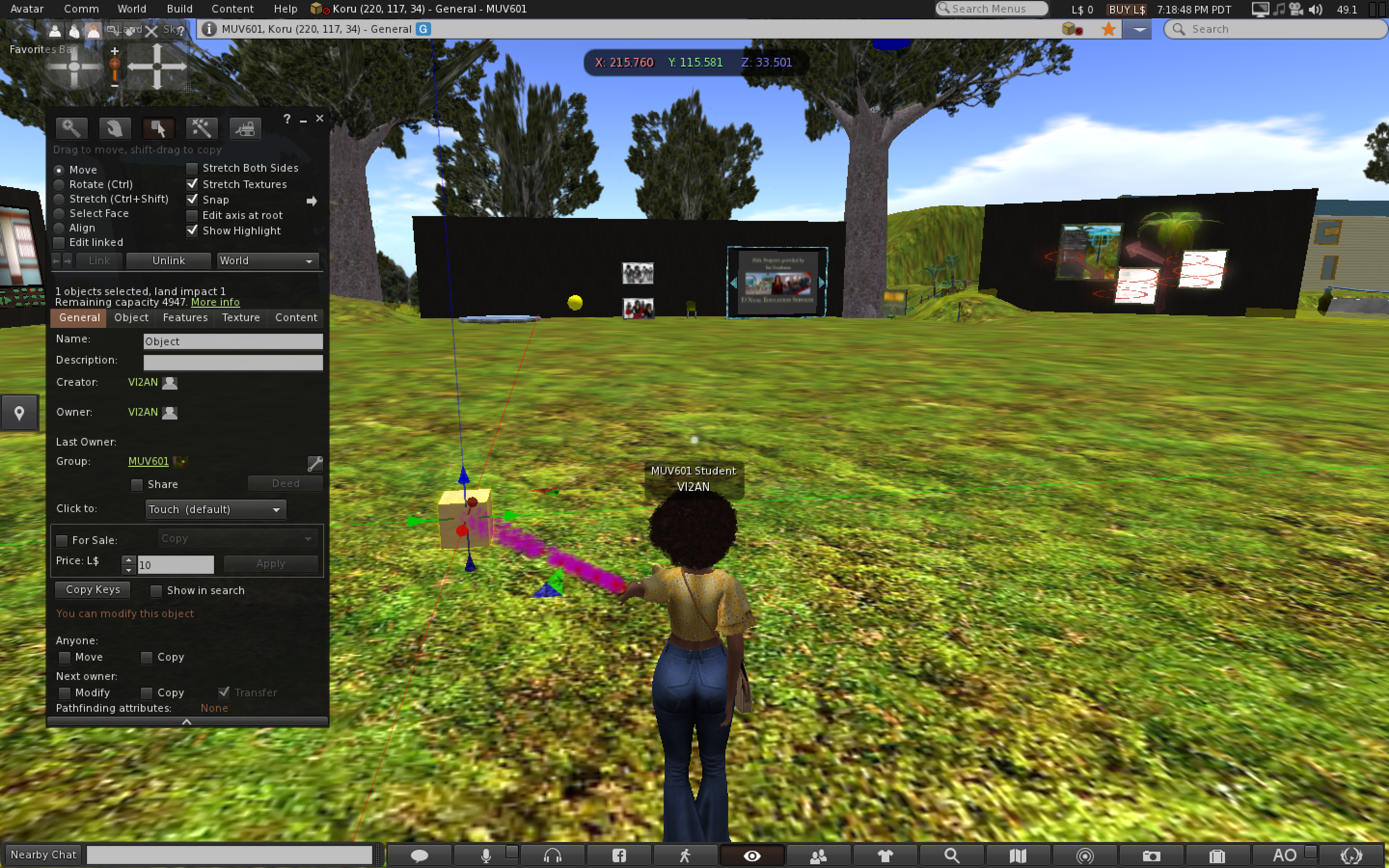Description of permissions on objects
In Second Life, every object has permissions. With permissions, you can control what other people can do with the content you create. When you create a new object in Second Life, you can set the permissions in the build window. It includes Anyone and Next owner.
Anyone:
Move: Whether someone can move your objects
Copy: Whether someone can copy your objects
Next owner:
Modify: Checking this means the next owner can modify the objects.
Copy: Checking this means the next owner can copy the objects.
Transfer: Checking this lets the next owner give your creation to someone else.
For the particular community I have joined in, the dropping or building of objects is not allowed.

In my personal blog, I also set some permissions.

Attribution — You must give appropriate credit, provide a link to the license, and indicate if changes were made. You may do so in any reasonable manner, but not in any way that suggests the licensor endorses you or your use.
NonCommercial — You may not use the material for commercial purposes.
ShareAlike — If you remix, transform, or build upon the material, you must distribute your contributions under the same license as the original.
In my opinion, set some permissions can protect our labor results better. Not allowing others to use the work for commercial purposes is to prevent criminals from using this to carry out illegal activities.
Demonstration of use and application of permissions
The user is limited to using the objects in the community.
What are some of the strengths and weaknesses of Permissions in MUVEs?
The strength of permission in MUVE is that it ensures that a community is used in the right manner that it was built for by the users. Therefore, if one requires to build or drop an object it will be evaluated to check if it meets the requirement of the community.
How are permissions relevant in MUVEs?
Permissions are relevant because it assists in making users understand the importance of community standards and adhere to them.
How will permissions work best in MUVEs?
Permission works best when enforced.
What is the significance of the components in permissions?
It prevents violation of the use of objects.
How do they complement MUVE objects?
The MUVE objects will be used for the purpose intended in the community chosen. For example, in Unzipped there is not development of objects because of the community standards against sexual objects.
Reference:
https://community.secondlife.com/knowledgebase/english/object-permissions-r57/